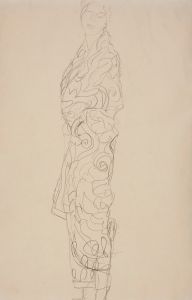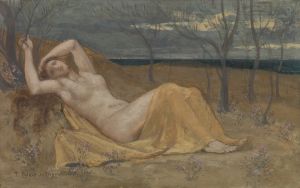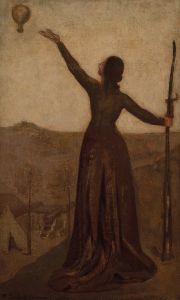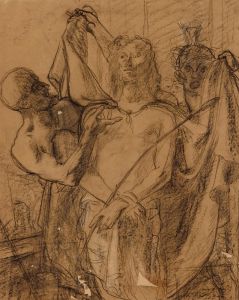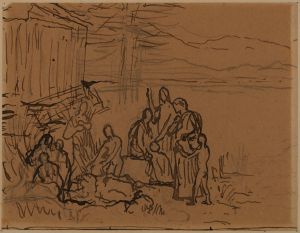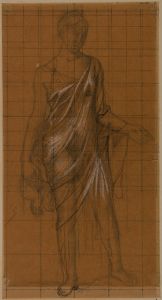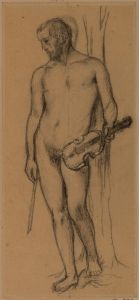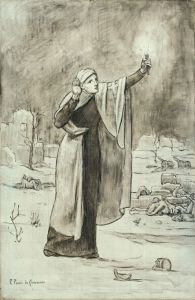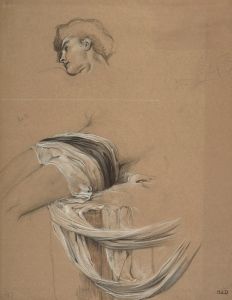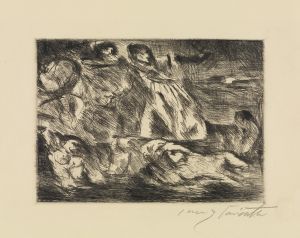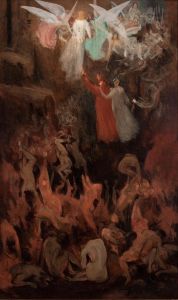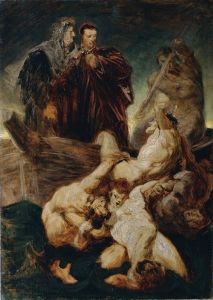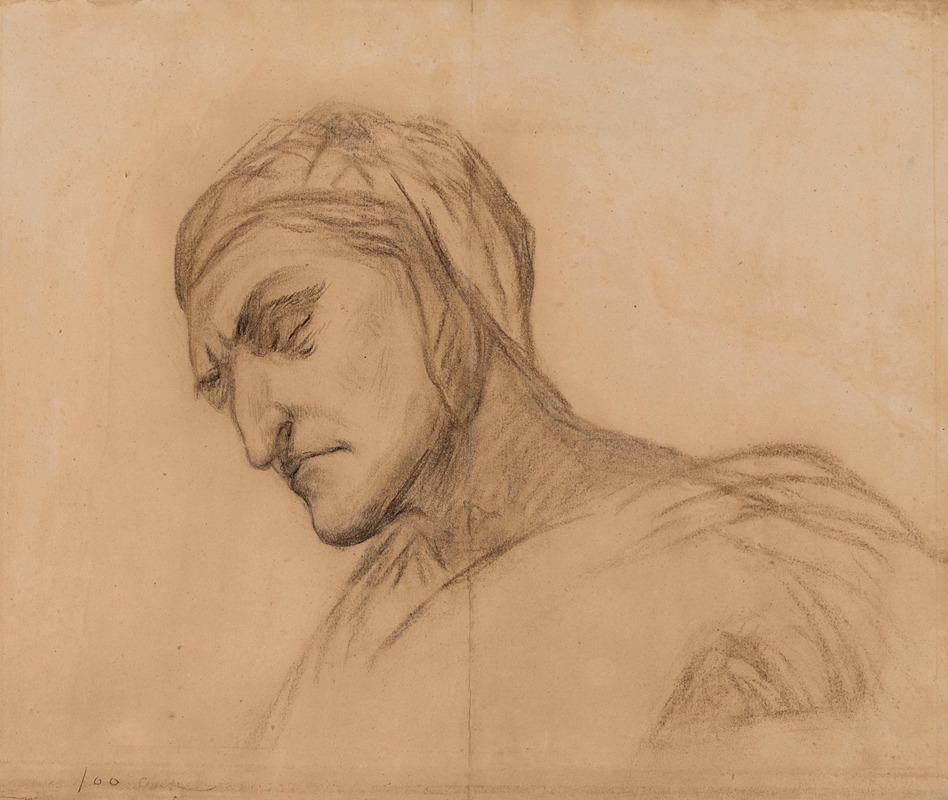
Dante, buste d’homme drapé, tête couverte de trois-quart à gauche
A hand-painted replica of Pierre Puvis de Chavannes’s masterpiece Dante, buste d’homme drapé, tête couverte de trois-quart à gauche, meticulously crafted by professional artists to capture the true essence of the original. Each piece is created with museum-quality canvas and rare mineral pigments, carefully painted by experienced artists with delicate brushstrokes and rich, layered colors to perfectly recreate the texture of the original artwork. Unlike machine-printed reproductions, this hand-painted version brings the painting to life, infused with the artist’s emotions and skill in every stroke. Whether for personal collection or home decoration, it instantly elevates the artistic atmosphere of any space.
Pierre Puvis de Chavannes, a prominent French painter of the 19th century, is known for his mural paintings and contributions to the Symbolist movement. One of his works, "Dante, buste d’homme drapé, tête couverte de trois-quart à gauche," reflects his interest in historical and literary themes, particularly those associated with classical and medieval subjects.
The painting, whose title translates to "Dante, Bust of a Draped Man, Head Covered, Three-Quarter to the Left," depicts the Italian poet Dante Alighieri, renowned for his epic poem "The Divine Comedy." This work is a testament to Puvis de Chavannes' ability to capture the essence of historical figures through his unique artistic style, which often emphasized simplicity and a muted color palette.
Puvis de Chavannes was born on December 14, 1824, in Lyon, France. He studied under several artists, including Eugène Delacroix and Thomas Couture, but eventually developed his own distinctive style. His works are characterized by their serene and contemplative nature, often featuring allegorical themes and figures set against idealized landscapes.
"Dante, buste d’homme drapé, tête couverte de trois-quart à gauche" is a fine example of Puvis de Chavannes' portraiture, where he combines his interest in historical subjects with his skill in creating a sense of timelessness and introspection. The painting portrays Dante in a contemplative pose, with his head turned slightly to the left. The drapery and the covered head suggest a sense of dignity and introspection, qualities often associated with the poet himself.
Puvis de Chavannes' work was influential in the development of modern art, particularly in the way he approached composition and the use of color. His murals, which can be found in various public buildings in France, such as the Panthéon in Paris, are celebrated for their harmonious integration with architecture and their ability to convey complex themes in a visually accessible manner.
The artist's contribution to the Symbolist movement is significant, as he sought to convey deeper meanings and emotions through his art, often drawing on literary and historical references. His work had a profound impact on later artists, including the Nabis and the Post-Impressionists, who admired his ability to evoke mood and atmosphere.
While specific details about the creation and current location of "Dante, buste d’homme drapé, tête couverte de trois-quart à gauche" may not be widely documented, the painting remains an important part of Puvis de Chavannes' oeuvre. It exemplifies his approach to portraiture and his interest in capturing the essence of his subjects through a combination of historical reference and artistic innovation.
In summary, Pierre Puvis de Chavannes' "Dante, buste d’homme drapé, tête couverte de trois-quart à gauche" is a notable work that reflects the artist's fascination with historical and literary figures. Through his distinctive style and thoughtful composition, Puvis de Chavannes has created a portrait that not only honors Dante Alighieri but also showcases the artist's contribution to the Symbolist movement and his lasting influence on the art world.





